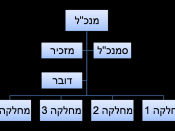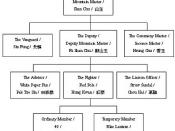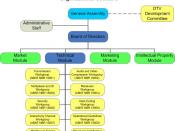Constraints on Strategy of An Organizational Structure
Adaptation to environmental challenges represents perhaps the key task for managers of business organizations. This task is made difficult by the potentially conflicting tasks of efficiently exploiting current assets and knowledge while simultaneously ensuring future competitiveness arising from the development of new assets and knowledge (Eisenhardt & Martin, 2000; March, 1991, Teece, Pisano, & Shuen, 1997). Normally, exploitation and exploration are viewed as mutually conflicting activities, and the key reason for this appears to be that they pose substantially different requirements for the organization in terms of the underlying organizational processes and structures (Gibson & Birkinshaw, 2004; Jansen, van den Bosch, & Volberda, 2006; March, 1991; Sidhu, Commandeur, & Volberda, 2007; Sidhu, Volberda, & Commandeur, 2004; Tushman & O'Reilly, 1996). Following this assertion entails that business organizations cospecialize their structures, technological orientation, and market strategies, and as suggested by Miles and Snow (1978), and organizations that fail to align these elements properly will show poor performance due to the inconsistencies among the elements characterizing their strategy, structures, and technological orientation.
The traditional perspective there-fore seems to hold that business organizations need to strike a balance between exploration and exploitation, suggesting that the underlying structures and processes are constraining in terms of the strategies that firms are able to implement. Other, more recent perspectives acknowledge this trade-off but emphasize that some business organizations are able to implement dual strategies, attempting both to increase efficiency in the short run while simultaneously improving long-run adaptability (Duncan, 1976; Gibson & Birkinshaw, 2004; Jansen, van den Bosch, & Volberda, 2006; Sidhu, Commandeur, & Volberda, 2007; Sidhu, Volberda, & Commandeur, 2004; Tushman & O'Reilly, 1996). This ability to maintain a dual strategic focus was referred to as "ambidexterity" by Duncan. While the managerial appeal of ambidexterity has been high,


